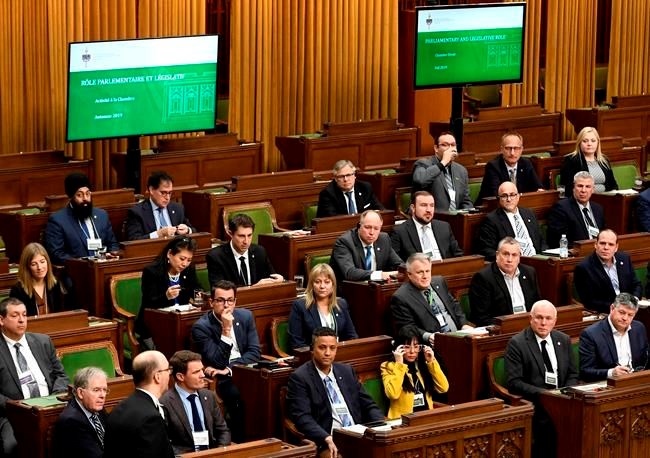OTTAWA — New Democrats are calling for the "archaic" House of Commons dress code — which requires men to wear a jacket and tie to speak in the chamber — to be scrapped.
NDP MPs want the traditional rules on "proper attire" to be updated, to make them more inclusive and to accommodate transgender, non-binary and two-spirit members.
There are no specific dress rules for women MPs who are still a minority in the House of Commons. Like men, they must dress in "contemporary business attire" in order to speak in a debate.
Randall Garrison, the NDP's spokesperson on LGBTQ issues, says the New Democrats will ask for the rules to be updated after the House returns on Nov. 22.
He says a simple statement about decorum would suffice, without specifying traditional gender-based modes of dress, such as a jacket and tie for a man.
“The provisions are archaic and we have been arguing they should be eliminated for a long time,” Garrison said Wednesday. “I don’t think there is a single New Democrat who would defend these archaic provisions."
The rules ban male MPs from wearing turtlenecks or ascots in the chamber, though clerical collars are allowed.
Rare exceptions have been made to the rules for men, such as allowing them to wear a kilt on Robbie Burns Day.
The NDP spokesperson wants two Commons committees — the board of internal economy, which deals with the administration of the House, and the procedure and House affairs committee — to look at updating the code when MPs return.
“The gender-based dress code needs to be eliminated. I don’t sit on the committees that deal with that, but I have suggested, and I will suggest when they do meet, that (the current rules) be eliminated,” Garrison added.
The Commons dress code has evolved over time to take sartorial changes into account. In 1994, rules which said members must remove their hats before speaking were abolished. In the 19th century, MPs often wore hats, including top hats.
There are no specific rules on what women should wear, beyond "business attire," likely because when the original rules of decorum were devised there were no women MPs. The first female MP, Agnes Macphail, was elected in 1921.
House of Commons Speakers have made some exceptions over the years to accommodate different modes of dress. MPs in the Armed Forces have been permitted to wear their uniforms in the House, and MPs without ties have been allowed to vote.
In 2005, a newly elected MP being introduced in the House of Commons wore traditional Métis dress without objection.
Rules on dress were temporarily relaxed after the air conditioning broke down in 2002. In 2006, a member with a medical condition causing sensitivity to light was allowed to wear tinted glasses.
The rules on "proper attire" add that "in certain circumstances, usually for medical reasons, the chair has allowed a relaxation of the dress standards allowing, for example, a male member whose arm was in a cast to wear a sweater in the House instead of a jacket."
But the NDP wants the rules to be abolished so that MPs don't have to conform to masculine and feminine dress stereotypes, and so that other smart modes of attire — which may not include a jacket and tie — are accepted, including traditional Indigenous dress.
Garrison warned that, while he wants the Commons to be more inclusive and welcoming to people from all backgrounds, the barriers to transgender and non-binary citizens being elected as MPs "occur way before they arrive in the House of Commons."
Métis MP Blake Desjarlais, who won Edmonton Griesbach for the NDP in the September election, is the first two-spirit MP in the House of Commons.
Heather Bradley, communications director for the Speaker's office, said it's up to MPs to decide whether to change the dress code. Potential changes would probably be discussed in committees, she added.
The House of Commons already has gender-neutral bathrooms for use by MPs and staff and the refurbished Centre Block will include more when it eventually reopens.
In 2019, the British Columbia legislature proposed an updated dress code modelled on professional and contemporary business attire. The move followed an outcry after legislature staff told some women to cover their arms, prompting several female reporters and NDP staffers to wear short sleeves in protest.
This report by The Canadian Press was first published Nov. 3, 2021.
Marie Woolf, The Canadian Press



